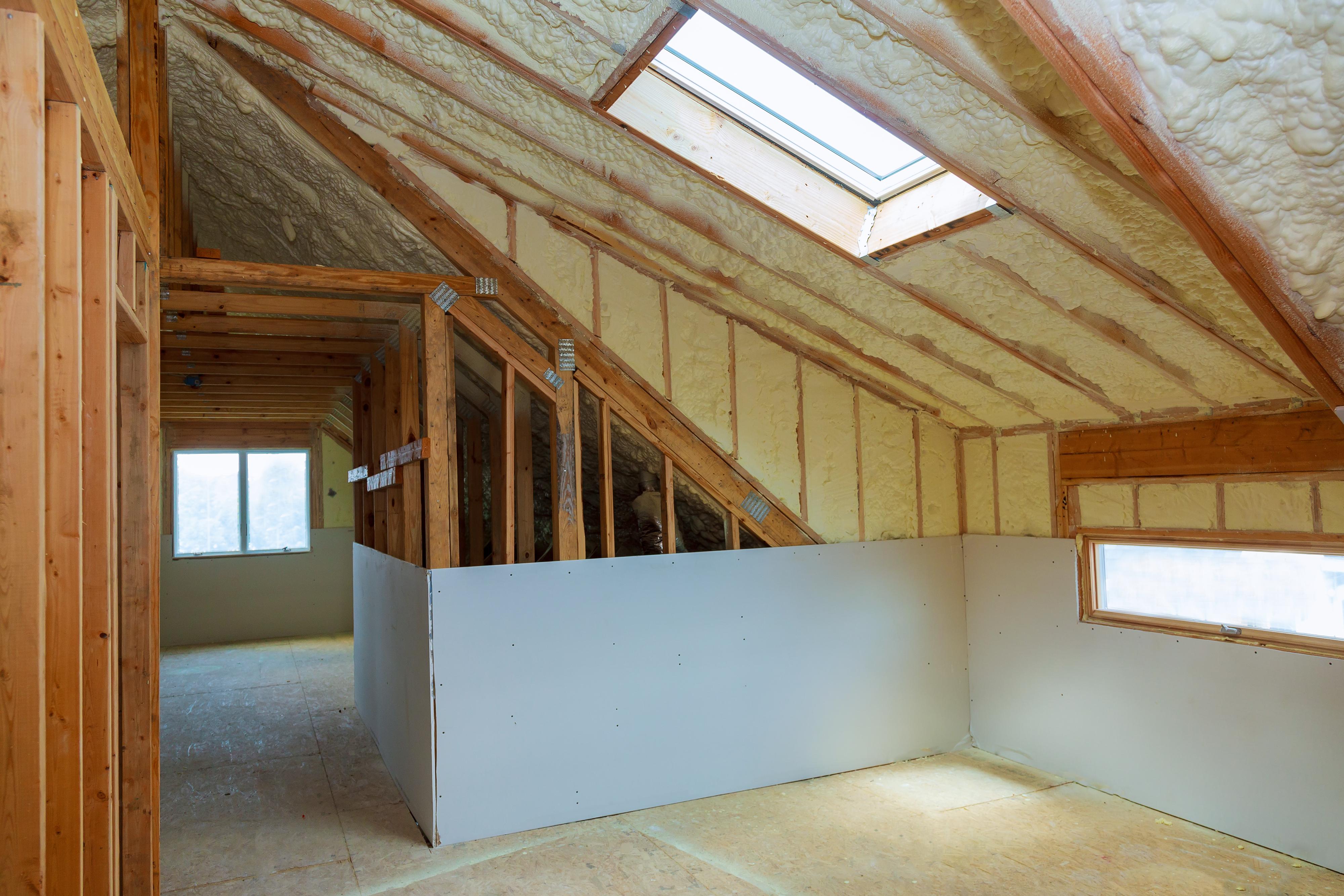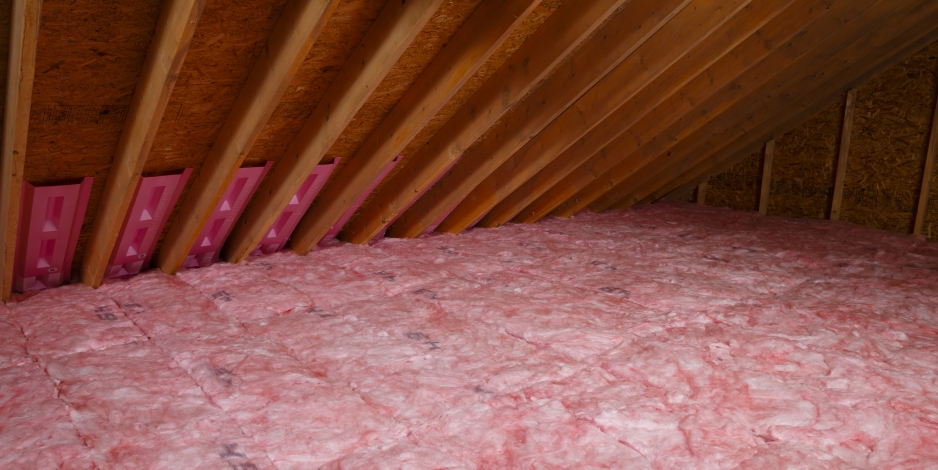Discover the Different Types of Attic Insulation and Their One-of-a-kind Advantages for Your Home's Power Effectiveness

Fiberglass Insulation
Fiberglass insulation is among one of the most typically made use of materials for attic insulation as a result of its excellent thermal efficiency and cost-effectiveness. Made up of tiny glass fibers, this material properly traps air, producing an insulating barrier that helps preserve regular indoor temperatures. Its high R-value per inch makes it particularly reliable at resisting warm transfer, which is critical for power preservation in homes.
Setup of fiberglass insulation is relatively straightforward, commonly available in batts or loose-fill forms, fitting numerous attic room arrangements. Additionally, it is non-combustible and immune to dampness, decreasing the danger of mold and mildew development. This longevity adds to its durability, making fiberglass a sensible long-term investment for house owners.
Furthermore, fiberglass insulation is commonly manufactured from recycled materials, which boosts its eco-friendliness. The material can likewise add to soundproofing, decreasing noise transfer between rooms. While it is important to use safety equipment during installation to avoid irritation from the fibers, the overall benefits of fiberglass insulation, consisting of power cost savings and environmental considerations, make it a popular selection for boosting attic room efficiency and promoting a comfy living setting.
Spray Foam Insulation
Spray foam insulation is a highly effective option for attic insulation, known for its remarkable air sealing and thermal efficiency. This innovative insulation product is composed of a mix of isocyanate and polyol material, which, when integrated, broadens rapidly to fill up gaps and dental caries in the attic room area. Its ability to abide by numerous surface areas ensures a continual obstacle against air leakages, considerably decreasing heat loss throughout colder months and warmth gain during warmer periods.
Among the key advantages of spray foam insulation is its high R-value per inch, which implies it provides exceptional thermal resistance in a fairly slim application. This is especially advantageous in attic rooms where area is frequently minimal. Furthermore, spray foam can help lessen moisture build-up, reducing the danger of mold and mold development, which can be damaging to both the structure and interior air top quality.
While the preliminary cost of spray foam insulation might be greater than typical choices, its lasting power savings, combined with increased convenience and improved home value, make it a rewarding investment for house owners seeking improved energy efficiency. Attic Insulation DFW. Overall, spray foam insulation sticks out as a reliable service for enhancing attic insulation
Cellulose Insulation

Cellulose insulation is a preferred selection for attic insulation, primarily made up of recycled paper products treated with fire resistants. This eco-friendly choice is known for its superb thermal efficiency, effectively lowering warm transfer in both summer season and winter season months. The dense make-up of cellulose enables it to load spaces and gaps in attic areas, offering a smooth obstacle against air leakages.
Among the considerable advantages of cellulose insulation is its ability to stand up to mold and parasites, owing to the fire retardant therapies used during production. Additionally, it flaunts a high R-value per inch, which translates into premium energy performance. Property owners can anticipate lower heating and cooling expenses as a result of enhanced insulation.
Installment is normally accomplished with blowing loose cellulose into the preferred area, allowing for a effective and quick process. This technique additionally minimizes interruption to the existing framework. Cellulose insulation has a fairly reduced ecological influence, as its manufacturing procedure makes use of recycled materials, contributing to sustainable building practices.
Rock Wool Insulation
Among the various options for attic insulation, rock wool, also called mineral wool, stands apart because of its excellent thermal and acoustic efficiency. Made from all-natural or recycled materials, rock wool is created by melting rock and rotating it right into fibers, causing an item that uses exceptional insulation residential or commercial properties.
One of the significant advantages of rock wool insulation is its high R-value, which shows its performance in standing up to warmth circulation. This characteristic not only boosts power effectiveness however also adds to keeping a comfy indoor temperature level year-round. Furthermore, rock woollen is naturally fireproof, making it a much safer option for homes as it can withstand high temperatures without melting or launching hazardous fumes.
Furthermore, rock woollen insulation excels in soundproofing abilities, properly decreasing sound transmission between spaces and from outdoors sources. On the whole, rock wool insulation supplies a comprehensive option for boosting energy performance, security, and convenience in property settings.
Radiant Obstacle Insulation
Radiant obstacle insulation works as a reliable service for decreasing heat transfer in attics, especially in warmer environments. This kind of insulation works by reflecting convected heat far from living rooms, thereby decreasing the quantity of warm that gets in a home throughout heat - Attic Insulation DFW. Normally made up of a highly click this reflective product, such as aluminum foil, radiant barriers are installed in attics, facing the roofing, where they can obstruct inbound warm from the sun
The key advantage of glowing obstacle insulation is its capacity to reduced air conditioning prices. By mirroring warmth instead of absorbing it, glowing obstacles can help maintain an extra secure interior temperature level, minimizing the work on a/c systems. This performance equates right into lower energy bills and enhanced comfort for homeowners.
Along with power financial savings, glowing obstacles can likewise contribute to improved indoor air quality. By lowering warmth accumulation, they assist decrease moisture levels, which can protect against mold and mildew development and improve overall air circulation. When mounted appropriately, glowing barrier insulation can be a very useful enhancement to any type of energy-efficient home, making it a worthy factor to consider for article source house owners seeking to improve their attic insulation approach.
Final Thought
In conclusion, recognizing the different kinds of attic insulation-- fiberglass, spray foam, cellulose, rock wool, and radiant barriers-- makes it possible for homeowners to make educated choices concerning power performance. By selecting the ideal insulation material, considerable decreases in power costs can be achieved, along with improvements in interior convenience.

In verdict, the original source comprehending the different types of attic room insulation-- fiberglass, spray foam, cellulose, rock wool, and glowing barriers-- enables home owners to make educated decisions pertaining to power effectiveness.